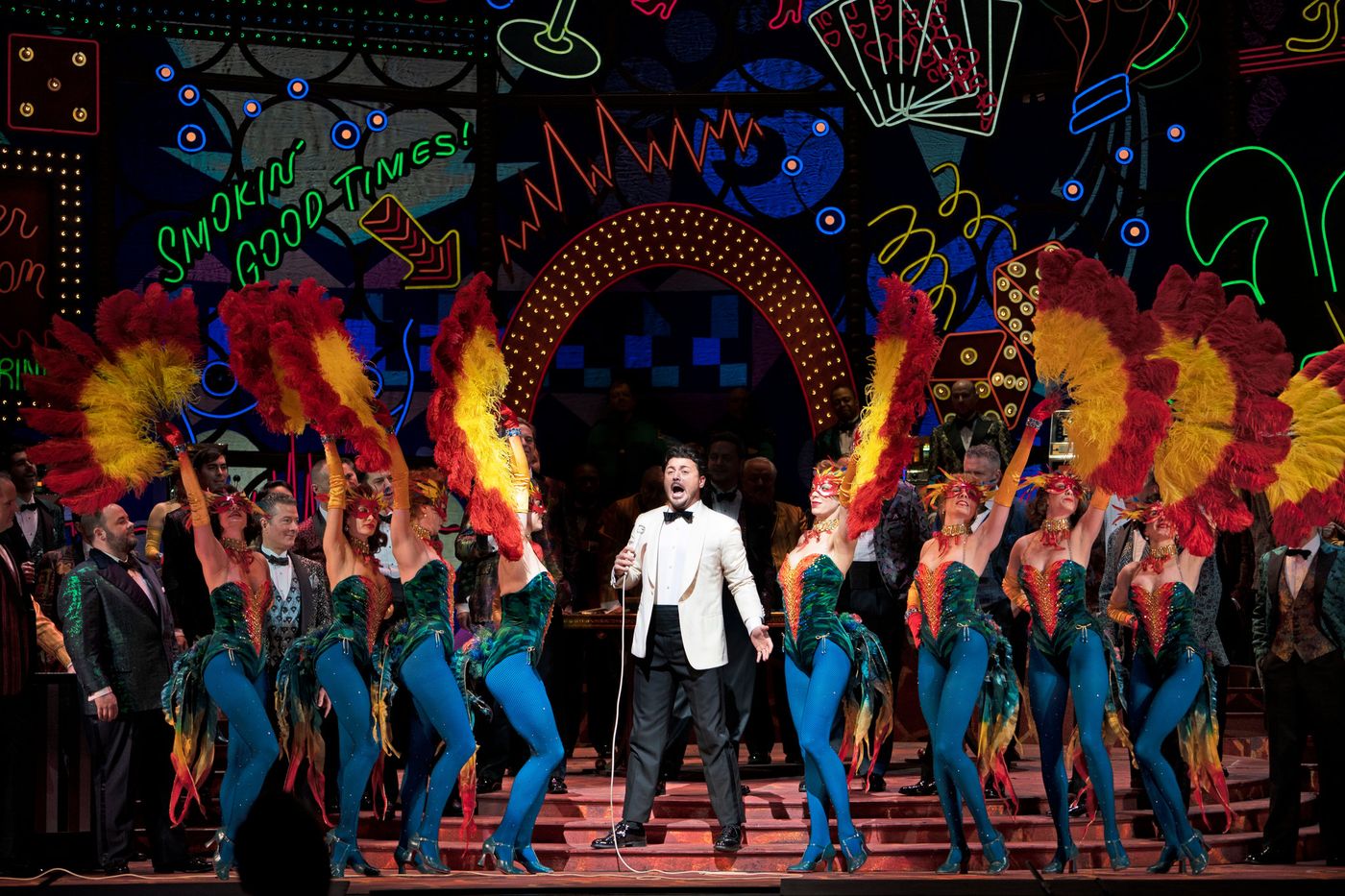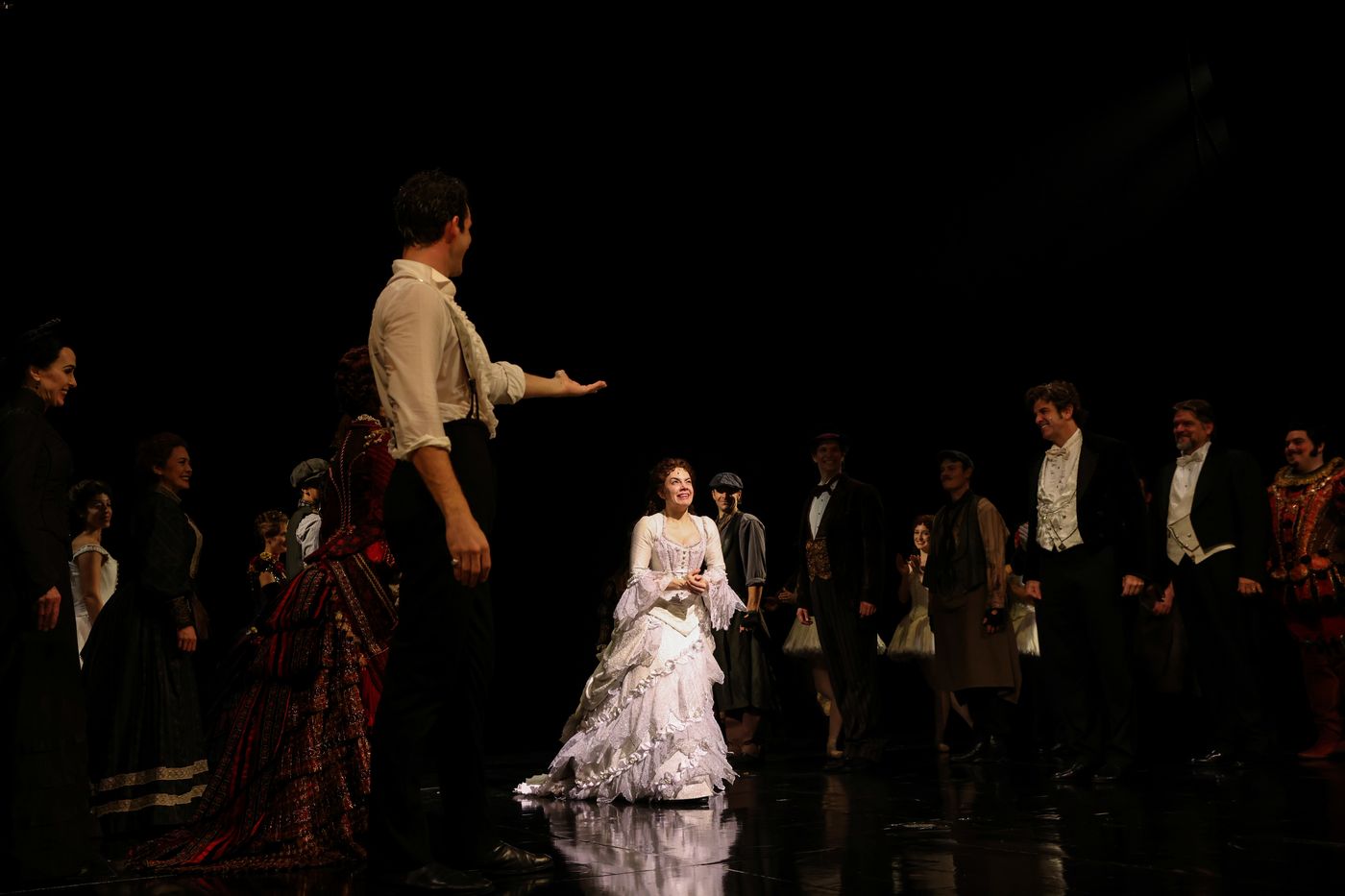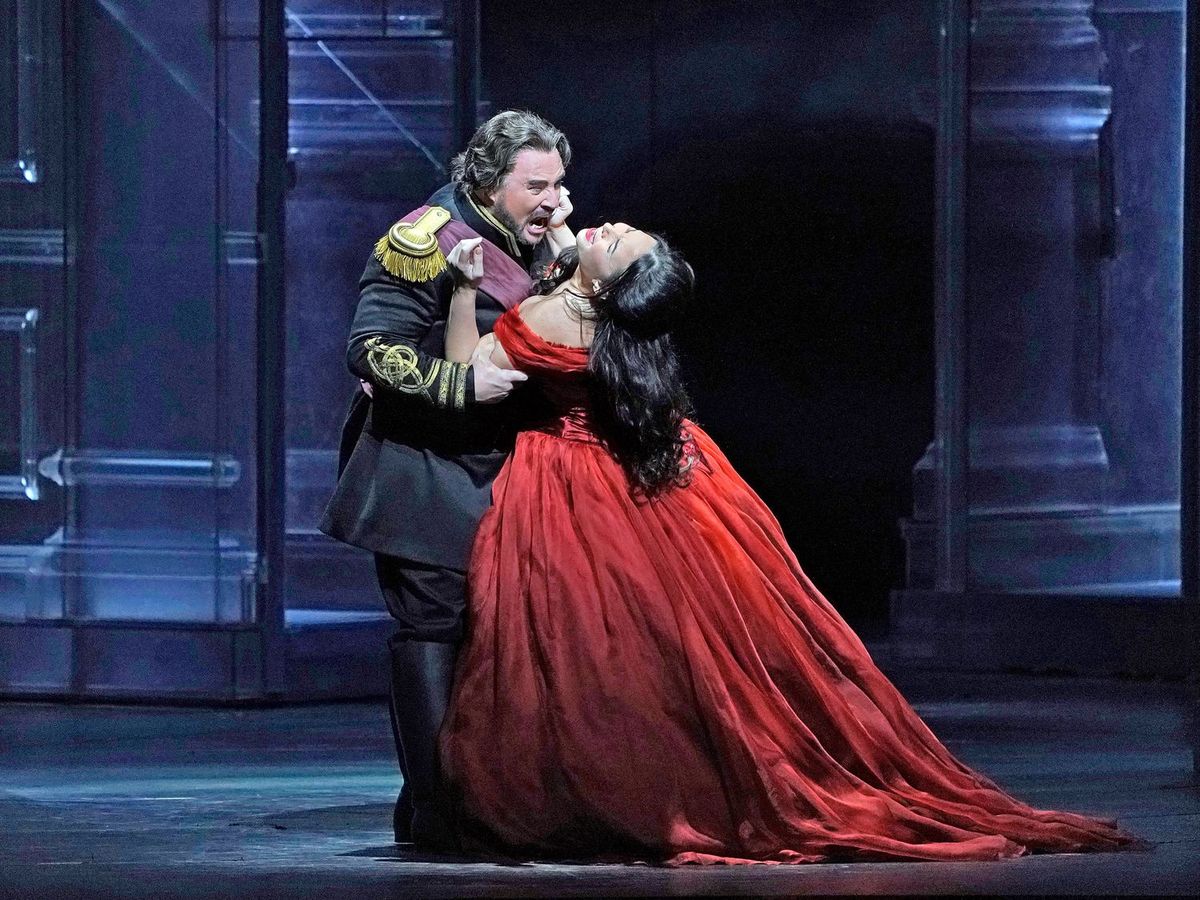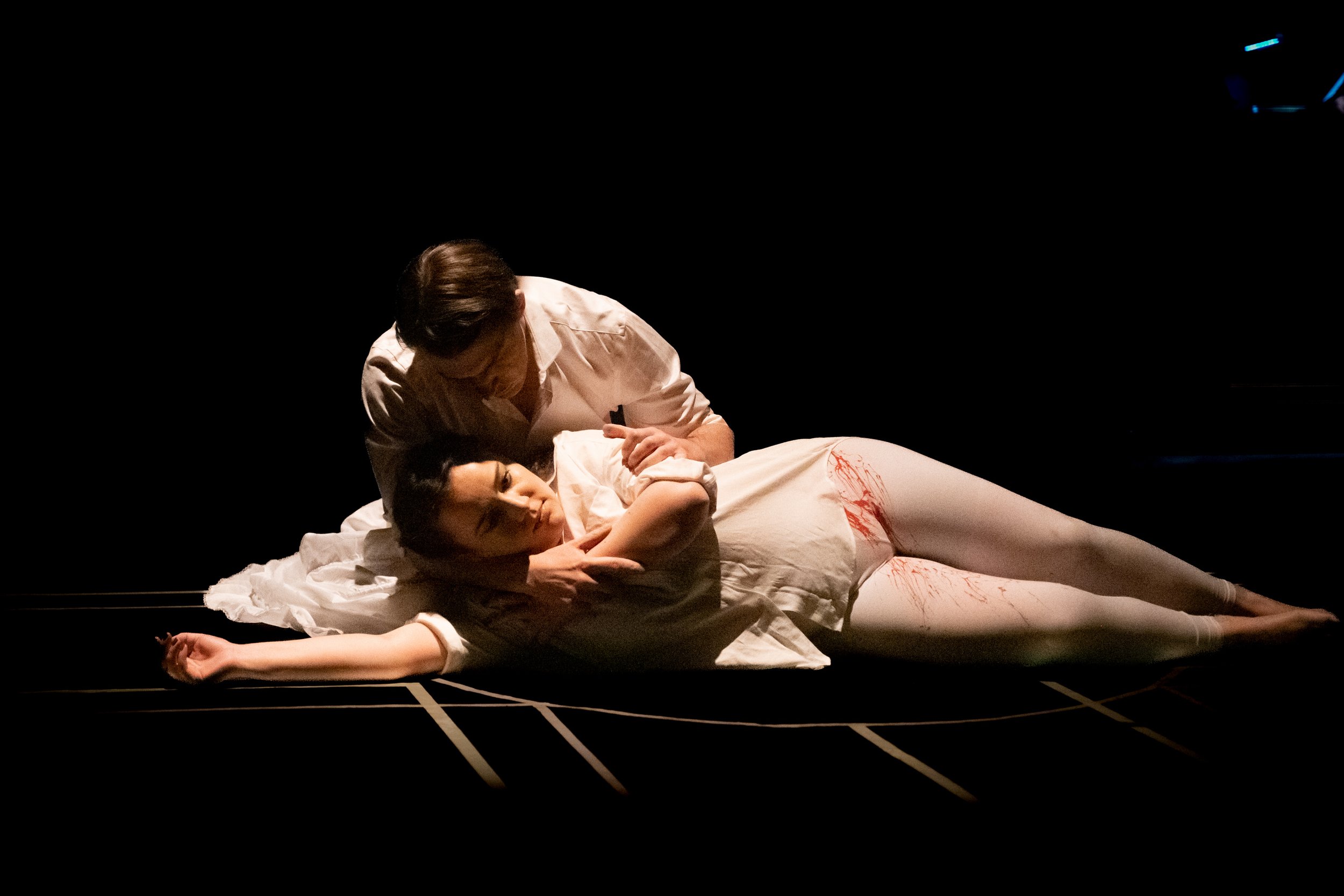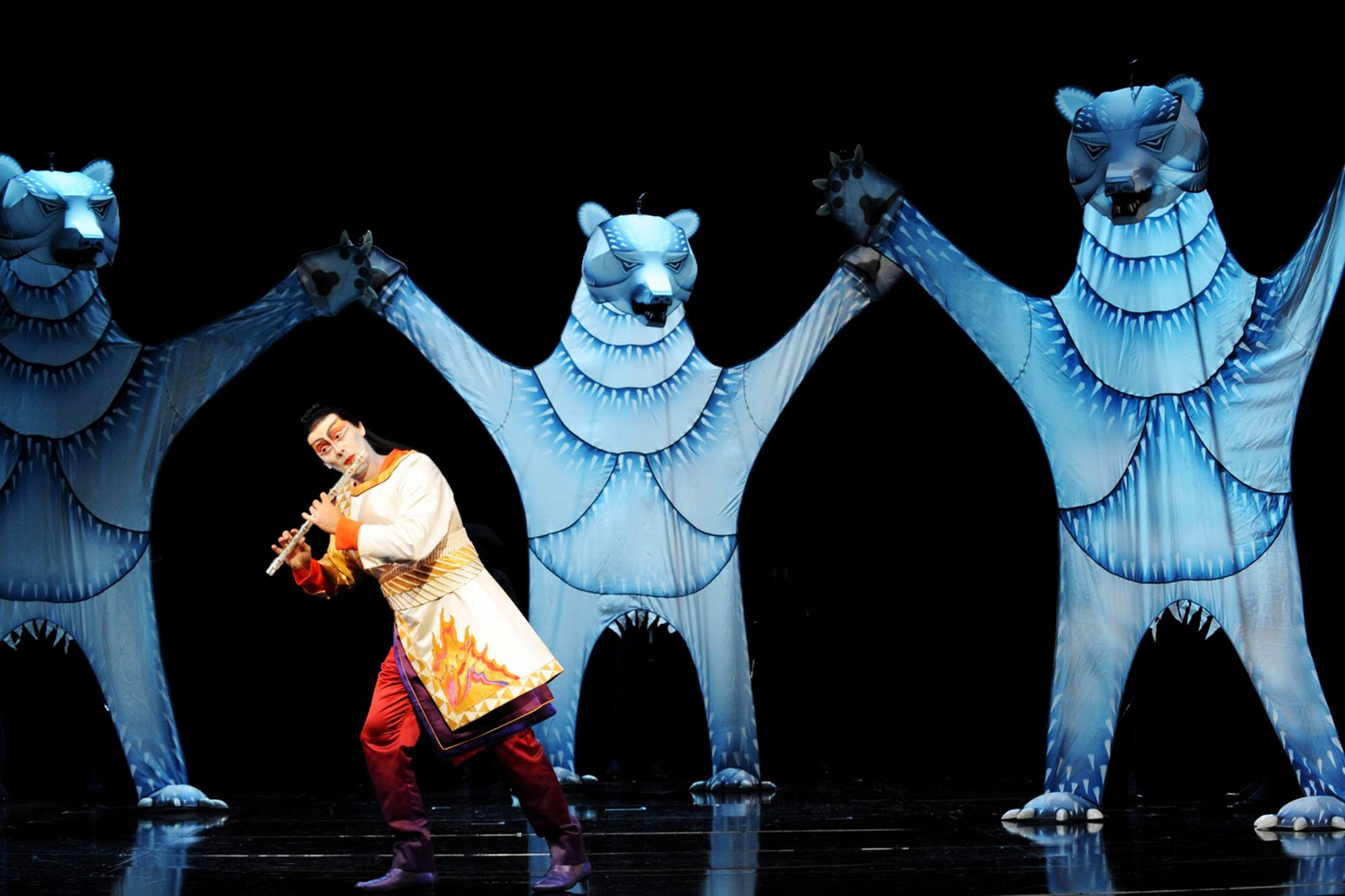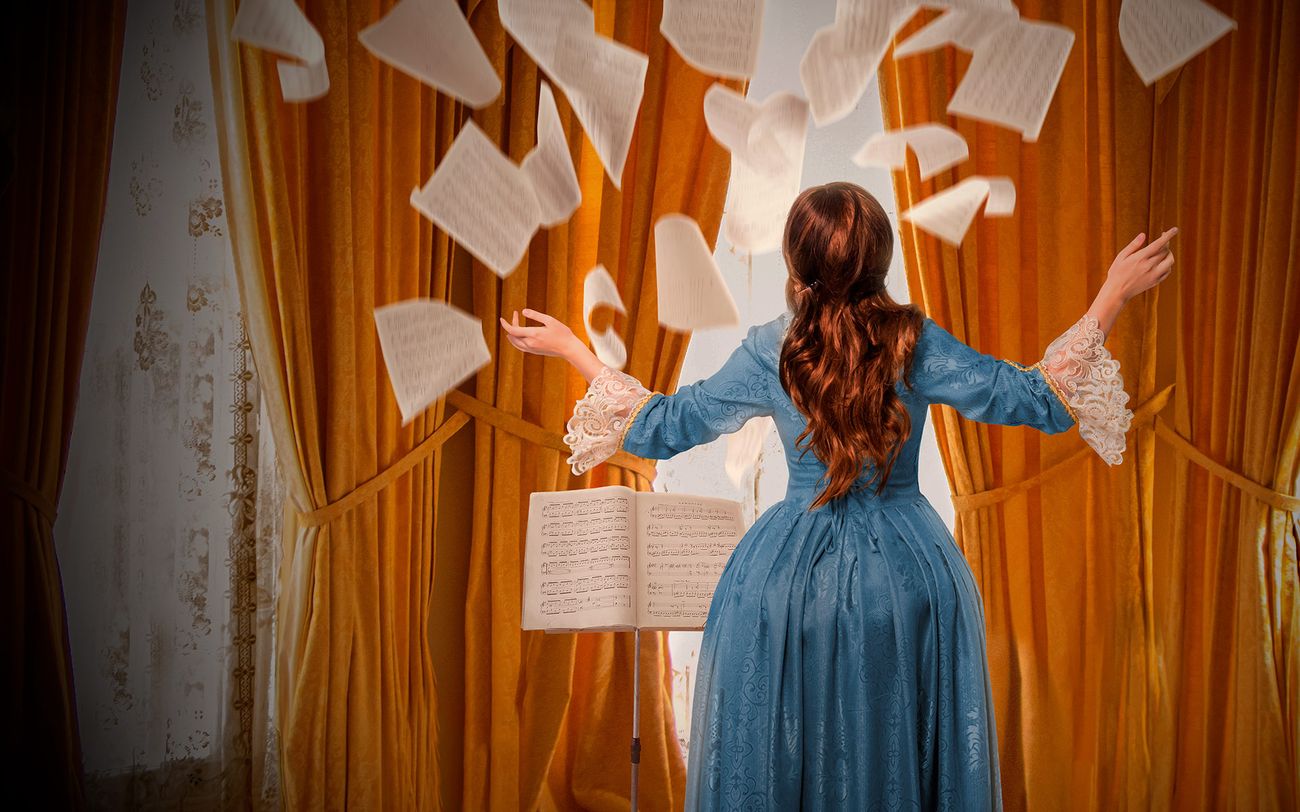Home>Events & Info>Opera>How Long Is La Traviata Opera
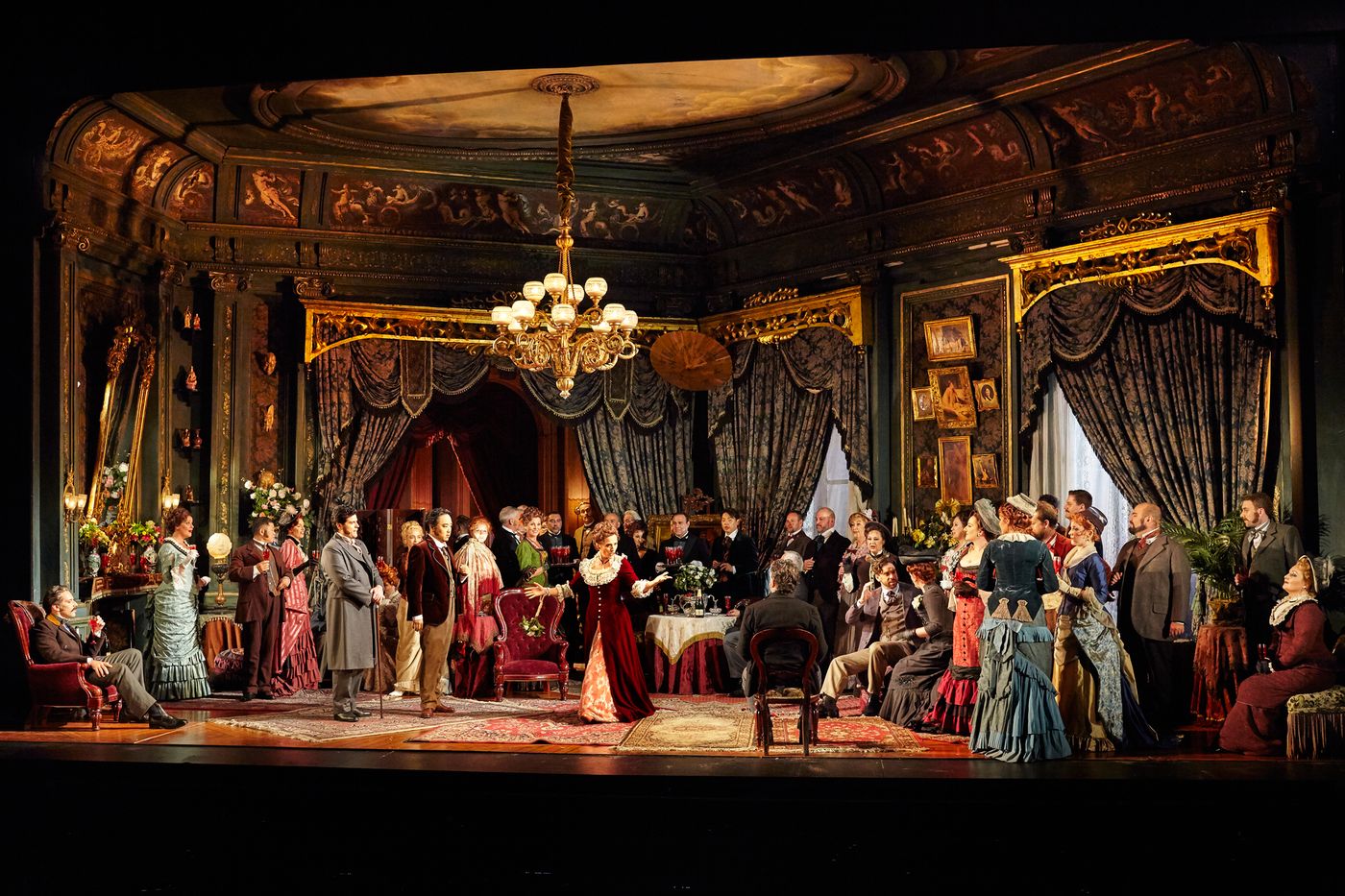

Opera
How Long Is La Traviata Opera
Published: January 5, 2024
Discover the ideal length of La Traviata opera and explore the captivating world of opera. Dive into the enchanting melodies and dramatic performances.
(Many of the links in this article redirect to a specific reviewed product. Your purchase of these products through affiliate links helps to generate commission for AudioLover.com, at no extra cost. Learn more)
Table of Contents
Introduction
La Traviata is one of the most beloved and widely performed operas in the world. Composed by Giuseppe Verdi and based on the play “La Dame aux Camélias” by Alexandre Dumas, the opera tells a tragic love story set in 19th-century Paris. With its poignant melodies, emotional plotline, and powerful performances, La Traviata has captivated audiences for over a century.
In this article, we will explore the length of La Traviata opera, examining its duration and the factors that contribute to its runtime. We will also delve into the historical performances of the opera and how its length has evolved over the years. Whether you’re a seasoned opera aficionado or newly discovering the magic of this art form, this article will provide you with a comprehensive understanding of the duration of La Traviata.
So, let’s dive into the captivating world of La Traviata and discover just how long this timeless opera unfolds on the stage.
The Story of La Traviata
La Traviata tells the tragic tale of Violetta Valéry, a beautiful and vibrant courtesan in Paris. Despite her glamorous lifestyle, Violetta longs for true love and happiness. She meets Alfredo Germont, a young suitor, and they quickly fall in love. However, their love is challenged by societal norms, family pressure, and Violetta’s declining health.
The opera is divided into three acts, each highlighting a different stage of Violetta’s journey. Act 1 introduces us to Violetta’s lavish lifestyle and her encounter with Alfredo. They profess their love for one another, and Violetta contemplates leaving her life of luxury behind for a chance at true happiness. However, she is torn between her desire for love and her fear of societal judgment.
In Act 2, we witness Violetta and Alfredo living together in the countryside, away from the prying eyes of society. Their happiness is short-lived when Alfredo’s father, Germont, convinces Violetta to sacrifice her love for the sake of Alfredo’s family reputation. Heartbroken, Violetta agrees and leaves Alfredo, leading to their separation.
The final act portrays Violetta’s declining health as she navigates the social gatherings of Paris. Despite her weakened state, she remains hopeful that Alfredo will come back to her. Eventually, Alfredo learns the truth about why Violetta left him and rushes to find her. Their reunion is bittersweet, as Violetta’s health worsens. In a heartbreaking finale, Violetta dies in Alfredo’s arms, surrounded by the remorseful onlookers who once judged her.
La Traviata’s story of love, sacrifice, and societal expectations resonates with audiences of all generations. It explores themes of redemption, forgiveness, and the fleeting nature of happiness. Through Verdi’s masterful composition and the power of the performers, the emotional impact of the story is magnified, leaving the audience deeply moved by the tragic fate of Violetta Valéry.
Length of La Traviata Opera
The length of La Traviata can vary depending on various factors such as the production, conductor’s interpretation, and the pacing of the performers. On average, the opera has a runtime of approximately two and a half to three hours, including intermissions.
The original score of La Traviata consists of three acts, with each act further divided into several scenes. Act 1 typically lasts around 45 to 60 minutes, Act 2 is around 60 to 75 minutes, and Act 3 ranges from 30 to 45 minutes.
However, it’s important to note that these timings can slightly vary from one production to another. Some directors may choose to include additional musical numbers, scenes, or even make cuts to certain parts to fit their artistic vision or to shorten the overall duration of the opera.
Additionally, the tempo and pacing of the performances can also have an impact on the length of the opera. A faster-paced rendition can result in a shorter runtime, while a more leisurely interpretation can extend the duration. The conductor plays a crucial role in determining the overall pace and timing of the performance.
Furthermore, the inclusion or exclusion of intermissions also affects the runtime of La Traviata. Traditionally, the opera includes two intermissions, usually after Act 1 and Act 2, providing the audience with a break to rest and reflect on the unfolding story. These intermissions typically last around 15 to 20 minutes each.
Overall, the length of La Traviata can range from two and a half to three hours, including intermissions. However, it is important to check the specific runtime of a given production when planning to attend a performance, as variations in interpretation and production choices can impact the actual duration of the opera.
Factors Affecting the Duration of La Traviata
Several factors can influence the duration of a performance of La Traviata. These factors are instrumental in shaping the overall runtime of the opera and can vary from one production to another. Understanding these factors can provide insight into why the duration of La Traviata can differ.
1. Director’s Interpretation: The director plays a crucial role in shaping the artistic vision of the opera. They have the freedom to make creative choices, such as adding or removing scenes, altering the pacing, or emphasizing certain aspects of the story. These interpretive decisions can affect the overall length of the opera.
2. Conductor’s Approach: The conductor has the responsibility of leading the orchestra and guiding the tempo of the music. They have the authority to choose the speed at which the music is performed, which can influence the overall timing of the opera. A faster-paced interpretation may result in a shorter runtime, whereas a slower tempo can extend the duration.
3. Performers’ Interpretation: The individual performances of the singers can also impact the length of the opera. Each performer has their own style and vocal nuances, which can result in variations in timing of the musical numbers. Additionally, the chemistry and interaction between the performers can impact the pacing of the dramatic scenes.
4. Production Choices: Different productions of La Traviata may include additional scenes, musical numbers, or even make cuts to certain sections. These choices can be influenced by the director’s vision or to fit the logistical constraints of the specific production. Such alterations can affect the overall runtime of the opera.
5. Language Adaptations: La Traviata is traditionally performed in Italian, but translations into other languages are common. Depending on the translation and the length of each translated phrase, the timing of the opera can be slightly affected.
It is important to note that while these factors contribute to the overall length, the essence and emotions of La Traviata remain intact regardless of the specific choices made in each production. Each rendition offers a unique interpretation, adding to the richness and diversity of the opera.
Historical Performances of La Traviata
Since its premiere in 1853, La Traviata has enjoyed a rich and storied history of performances around the world. Throughout its existence, the opera has undergone various interpretations and adaptations, contributing to the diversity of its historical performances. Let’s explore some notable moments in the history of La Traviata:
1. Premiere and Early Performances: La Traviata premiered at Venice’s Teatro La Fenice on March 6, 1853. Despite a somewhat tumultuous reception initially, the opera quickly gained popularity and went on to become one of Verdi’s most successful works. Notable early performances included revivals at Milan’s Teatro alla Scala and Paris’s Théâtre Italien.
2. Renata Tebaldi and Maria Callas: In the mid-20th century, two iconic sopranos, Renata Tebaldi and Maria Callas, made their mark on the role of Violetta Valéry in La Traviata. Tebaldi’s warm and lyrical voice, paired with her emotional interpretation, enchanted audiences. Callas, on the other hand, brought a dramatic intensity and vocal brilliance to the role, redefining the character.
3. Franco Zeffirelli’s Productions: The renowned Italian director Franco Zeffirelli directed several acclaimed productions of La Traviata during the latter half of the 20th century. His visually stunning and emotionally evocative stagings brought renewed interest and appreciation for the opera.
4. Metropolitan Opera Productions: The Metropolitan Opera in New York City has played a significant role in the history of La Traviata. It has hosted numerous legendary performances of the opera, featuring renowned artists such as Beverly Sills, Joan Sutherland, and Anna Netrebko. These performances have helped solidify La Traviata’s place as a staple in the opera repertoire.
5. Adaptations and Film Versions: La Traviata has also seen adaptations into different art forms, including film. Notable film adaptations include Franco Zeffirelli’s 1983 film starring Teresa Stratas and Plácido Domingo and the 2005 film adaptation “La Dame aux Camélias” directed by Jean-François Sivadier.
Throughout its history, La Traviata has captivated audiences with its timeless story and powerful music. The opera has seen countless performances worldwide, each contributing to its enduring legacy and cementing its place as one of the greatest works in the operatic repertoire.
Modern Interpretations and Variations in Length
In modern times, La Traviata has continued to evolve through innovative interpretations and variations in length. Directors and conductors have brought new perspectives and creative choices to the opera, resulting in unique productions that offer fresh insights into the timeless story. Here are some examples of modern interpretations and variations in length:
1. Regietheater Productions: Regietheater, or “director’s theater,” has become a popular approach in contemporary opera productions. Directors take liberties in reimagining the setting, costumes, and sometimes even the narrative of La Traviata. These productions often push boundaries and challenge traditional interpretations, creating thought-provoking and visually striking performances.
2. Reduced Versions: Some productions of La Traviata have experimented with reducing the length of the opera. This can be achieved by making cuts to certain musical numbers or scenes, streamlining the storyline while maintaining the essence of the narrative. These condensed versions offer a more compact experience for those seeking a shorter opera experience.
3. Extended Versions: On the other hand, some directors opt to include additional material in their productions, expanding the opera’s length. This can involve incorporating music and scenes that were originally cut by Verdi or adding supplementary material to enhance the storytelling. These extended versions provide a more comprehensive and immersive experience for the audience.
4. Contemporary Settings: While La Traviata is traditionally set in 19th-century Paris, modern productions have been known to place the story in different time periods or even contemporary settings. These reinterpretations add a layer of relevance and enable the opera to resonate with contemporary audiences, highlighting the timeless themes of love, sacrifice, and societal expectations.
5. Multimedia and Technology: Advances in technology have allowed for innovative use of multimedia elements in La Traviata productions. Video projections, digital scenery, and interactive staging techniques have been employed to enhance the visual storytelling and create immersive experiences for the audience.
These modern interpretations and variations in length provide a fresh perspective on La Traviata, keeping the opera relevant and engaging for contemporary audiences. While some may prefer the traditional approach, these creative adaptations offer exciting and dynamic renditions of Verdi’s timeless masterpiece.
Conclusion
La Traviata is a truly timeless opera that continues to captivate audiences around the world. Its compelling story, emotionally powerful music, and memorable characters have cemented its place as one of the most beloved works in the operatic repertoire.
The duration of La Traviata can vary depending on various factors such as the production, conductor’s interpretation, and the pacing of the performers. On average, the opera has a runtime of approximately two and a half to three hours, including intermissions. However, it’s important to note that specific productions may have slight variations in duration.
Throughout its history, La Traviata has seen numerous interpretations, adaptations, and changes in length. Directors have brought fresh perspectives through regietheater productions, contemporary settings, and innovative use of technology. Some productions have condensed or extended the runtime of the opera, offering unique experiences for the audience.
From the premiere in 1853 to the modern-day performances, La Traviata has seen remarkable moments in its historical performances. Renowned singers like Renata Tebaldi and Maria Callas have left indelible marks on the role of Violetta Valéry. Notable directors like Franco Zeffirelli have brought their visionary productions to life, while the Metropolitan Opera has hosted legendary performances.
In conclusion, La Traviata remains a beloved and enduring masterpiece that continues to touch hearts and inspire audiences worldwide. Whether experienced in its traditional form or through modern reinterpretations, the emotion, beauty, and timeless themes of love, sacrifice, and societal expectations transcend time and cultural boundaries, making La Traviata a truly exceptional opera that will continue to be cherished for generations to come.

